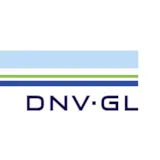Get regular cruise vessel, ferry & RoRo insights!
Join thousands of industry leaders today who have already signed up to receive the latest insights.
Sign up
DNV GL launched a new certification in infection prevention for the maritime industry (CIP-M) to support customers in their response to COVID-19, or any future emerging pathogen and to give passengers and crew confidence that exacting infection prevention measures are in place.


Simon Mockler is a Risk Management Consultant, with a decade of experience in multiple industry segments in safety, operational and technical risk. He holds a M Eng (Hons) in Ship Science with Naval Architecture from the University of Southampton. Since 2018 Simon has been leading a team of maritime consultants working with safety, technical and project risk management at DNV GL - Maritime in Americas.


Patrick serves as the President and Chief Executive Officer of DNV GL Healthcare and is responsible for the North American healthcare business of DNV GL. Patrick has more than 25 years of healthcare management experience, having held various leadership positions in hospitals including Chief Executive Officer, Chief Operating Officer and Vice President for Quality and Business Development. He holds a Ms in Hospital and Health Administration from Xavier University.
What is CIP-M and why has DNV GL developed it?

The emergence of COVID-19 disrupted the entire maritime industry and brought about an urgent need for vessel owners and operators to not only mitigate infection risk in the interests of business continuity, but also restore stakeholder confidence in the industry. To support our customers in their response to COVID-19, or any future emerging pathogen, we launched CIP-M or DNV GL’s Certification in Infection Prevention – Maritime program. This program builds on a DNV GL healthcare program that has been available since January 2019 and consists of a holistic set of requirements for an infection prevention and control management system. The program has been tailored to fit with established maritime codes and standards as applicable. CIP-M is also intended to be customizable to company and ship-specific infection risk profiles, according to design and operational considerations. The requirements can also be aligned with the regulatory context in which the ship is operating, whether national and international requirements or industry standards.

Can you provide us some insights on the work of DNV GL Healthcare?

DNV GL Healthcare was established in 2008 and has accredited or certified more than 600 hospitals around the globe to date. We utilize an alternative to traditional hospital accreditation by incorporating the ISO 9001 quality management system. Our NIAHO integrated accreditation process encourages hospitals to be more effective in their key processes such as quality improvement, patient safety and infection prevention and control. We have teams of experienced healthcare professionals including clinicians, experts in infection prevention, quality management, healthcare operations and environmental safety. Our experts apply standards in a practical way, while working collaboratively with our customers to ensure compliance and demonstrate continuous improvement. This collaborative engagement, with our current hospital accreditation programs, has enabled us to develop additional certification programs that benefit our customers based on their goals for improvement.

CIP-M is based on the CIP Program that DNV GL Healthcare has been working on for several years. Can you tell us more about CIP?

Infection prevention and control practice is a key component of DNV GL Healthcare’s survey activity. Our evidence-based approach to surveying organizations extends to the management of infection risk in a healthcare-setting. DNV GL realized that many healthcare institutions struggle with the proactive management of infection risks and healthcare associated infections (HAI). The CIP requirements were developed by DNV GL Healthcare to provide a modern, comprehensive and practical framework to help organizations improve their management of infection risk. The requirements are compatible with the World Health Organization, the US Centers for Disease Control, OSHA, CMS requirements relative to its scope of operations, and other national guidelines to allow better integration and ease of implementation. The CIP requirements – for both, CIP and CIP-M – form the basis for conducting organization infection prevention and control assessment activities and can be used to facilitate infection prevention management system design, hazard identification, risk assessment, gap analyses, and training.

How has CIP-M been developed?

We first contacted our Healthcare colleagues in late March to discuss hospital construction standards with a view to assisting with a conversion of a passenger ship to act as a hospital ship. As we started to discuss further and looked at more operational measures, we immediately recognized the experience and the potential contained within our infection prevention and control team and reached out to a number of customers to see if we could use this experience to assist them in addressing the challenges presented by COVID-19.

From the first customer conversations we identified CIP as an area of interest due to the proven survey methodology and the assurance that can be provided by an independent third party. As we began to review the established CIP requirements we apply to hospitals, it rapidly became clear that there were a lot of areas which were directly applicable to the maritime industry, especially to passenger ships. We then, with our maritime colleagues, went to work aligning the requirements with existing maritime regulations and practices, in particular the ISM Code. We scaled back requirements in areas where we assessed that there was a lower risk - for example in medical services where we have less extensive procedures performed while increasing the focus on sanitary and transmission-based precautions in accommodation areas.

How does the certification process work?

A vessel owner executing the program will first participate in an office-based audit of the company’s management system. This audit allows us to evaluate the processes the company will use to manage infection risk. A gap assessment approach for the audit allows us to evaluate the organizational capability and competence, as well as to ensure that any local or industry specific requirements are properly addressed. The initial audit is then followed by a shipboard survey to verify implementation of the program’s requirements. This survey is carried out by a team comprised of experienced infection prevention and control practitioners supported by DNV GL - Maritime surveyors and auditors familiar with the company’s ship types and operations. Successful completion of the program will lead to individual ship certification with an ongoing verification scheme to ensure continued compliance. The scope of the program addresses all relevant aspects for the oversight governance and management of a company’s infection prevention and control strategy, with continuous improvement being at the core.

What benefit is provided through pursuing CIP-M certification?

CIP-M combines the extensive, hands-on, and practical expertise from two of DNV GL's businesses to help owners and operators in their efforts to restore the confidence of crew, passengers, and other external stakeholders that protective processes are in place and that measures to reduce infection risk have been taken. We apply a flexible and holistic pier-to-pier, or curb-to-curb approach to infection risk and provide shipowners and operators with access to assurance comparable to that of hospitals and other medical facilities, adjusted to the reality of ship operations, and the unique challenges of the maritime environment.

Join thousands of industry leaders today who have already signed up to receive the latest insights.
Sign up